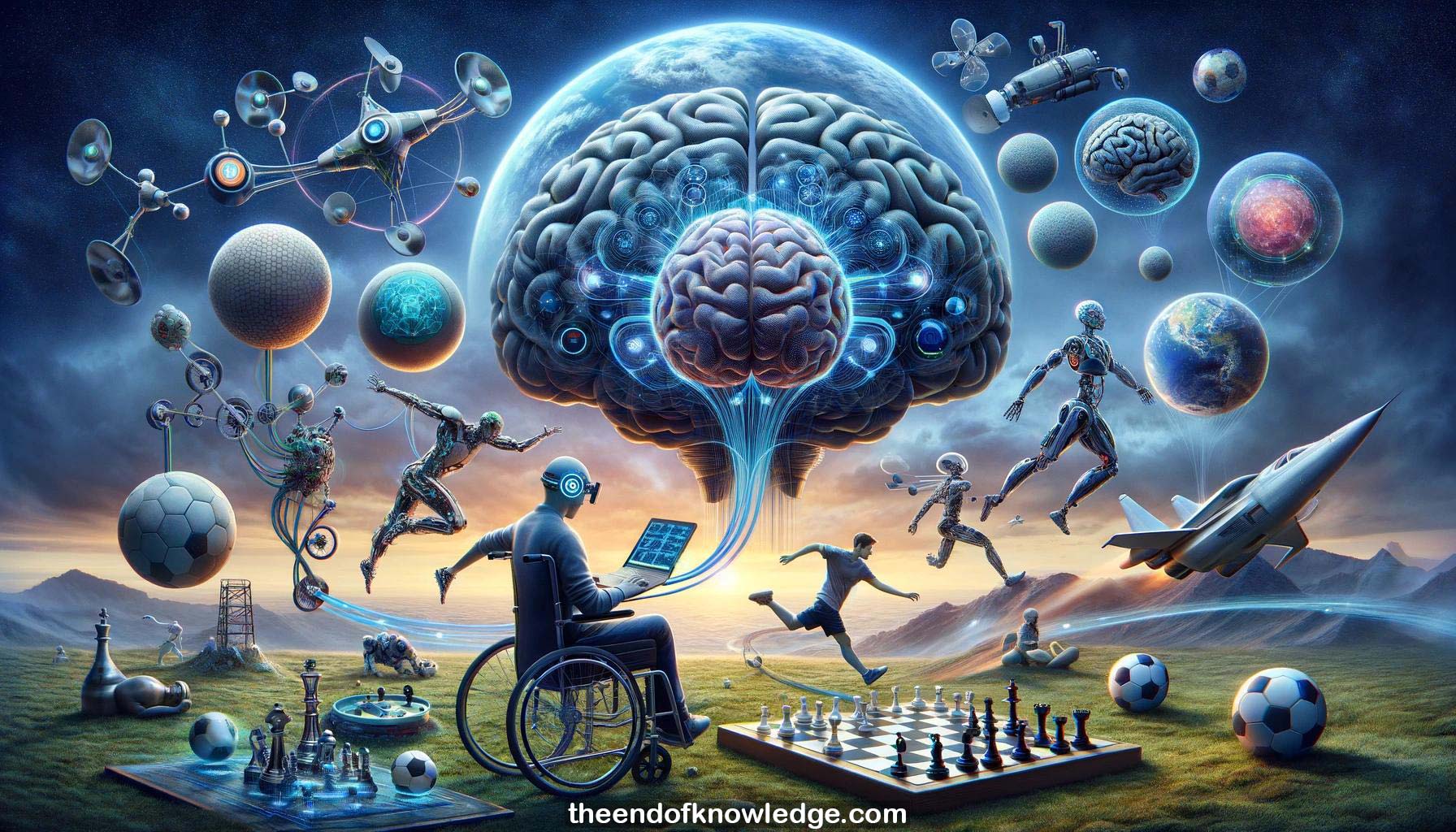 >
>
Concept Graph & Resume using Claude 3 Opus | Chat GPT4 | Llama 3:
Resume:
1.- Zied Tayeb, from University of Lincoln (UK) and Berlin company Nyoage, presented on hybrid brain-computer interfaces capturing multiple biosignals.
2.- Zied's interest in BCI stems from his mother's late-stage diagnosis with multiple sclerosis and lack of available solutions at the time.
3.- Examples of BCI applications: paraplegic patient kicking off 2014 World Cup, composing music with thoughts, typing via brain signals, controlling robotic arm.
4.- Zied's PhD focused on using EEG, EOG, EMG signals to control prosthetic arm and provide sensory feedback to the user.
5.- Started with decoding motor imagery (left/right hand movements) from EEG using deep learning (CNNs) in 2017-18, achieving 90% accuracy.
6.- Also decoded EEG using neuromorphic computing (spiking neural networks) on SpiNNaker chip, with 75% accuracy but less power and latency.
7.- Combined EOG for 2D robotic arm control and EMG for grasp with 93.6% accuracy. Arm moved via eye movements, grasped via EMG.
8.- Worked on providing sensory feedback - decoded EEG to detect sharpness/pain level when prosthesis touched objects, enabling withdrawal reflex.
9.- Found early EEG responses to noxious stimuli in parietal lobe at 54ms. Noxious stimuli also activated motor cortex for withdrawal reflex.
10.- Classified 5 levels of sharpness/pain from EEG with 95% accuracy. ACC played role as early warning system for noxious stimuli.
11.- Also decoded 5 levels of temperature (very cold to very hot) from EEG when prosthesis touched objects. Implemented graded withdrawal speeds.
12.- Did teleoperation experiments controlling a robot with artificial skin to touch hot/cold objects. Decoded EEG to implement withdrawal reflex.
13.- Started company Nyoage to translate BCI research into remote monitoring and neurorehabilitation products for neurological disorders, starting with multiple sclerosis.
14.- Goal is to prevent disability for over 1 million brain disease patients. Targeting MS first, then Parkinson's, ADHD, dementia, ALS.
15.- MS is problematic - drugs don't fit all, costs increase 70% as disease progresses, 42% get inadequate early treatment, 50% have silent progression.
16.- Created BrainMirror platform using stylish EEG cap/visor plus EMG. Patients play cognitive games for 25-40 min, data sent to physicians.
17.- Games are designed to capture digital biomarkers of disease progression. Machine learning used to translate EEG/biosignals into meaningful indicators.
18.- Games also serve as "neurorehabilitation" to alleviate cognitive symptoms. Progress tracked in real-time. Example: EEG-controlled chess game for attention/memory.
19.- Digital health enables remote monitoring, cutting costs (clinical, economic, environmental) for payers. Helps pharma run decentralized, efficient clinical trials.
20.- Empowers patients and physicians with real-time remote monitoring. Cognitive games provide neurotherapeutic treatment to enhance abilities and combat disease.
21.- Funded to run international multi-site clinical trial (RMMS) to validate medical device for MS monitoring and rehab. Over 300 patients.
22.- Also working with space industry (Axiom Space) to use BCI to monitor cognitive effects of space radiation/microgravity on astronauts.
23.- Developing BCI to monitor and enhance astronaut cognition for complex tasks. Goal to use on new space station by 2025.
24.- Nyoage has won awards from NASA iTech, Brain-Computer Interface Award, Luxembourg National Innovation Agency. Presented to King of Belgium recently.
25.- Still early days for using BCI reliably in space due to microgravity effects on EEG. A few companies experimenting on ISS.
26.- Q&A: Discussed possibility of BCI+FES to restore movement in paralysis patients. Not speaker's direct research focus but plausible.
27.- Pain regions decoded in EEG studies: motor cortex ERD/ERS, somatosensory areas, anterior cingulate cortex (ACC). TU Munich group expert.
28.- Able to decode tactile differences (spiky vs smooth) from EEG. Other groups like EPFL also investigating this.
29.- Discussed EEG signatures of phantom limb pain in amputees in another study, using similar BCI approach.
30.- Chess game board was 4x5. Speaker recruiting at Nyoage for missionaries to transform lives of brain disease patients via BCI.
Knowledge Vault built byDavid Vivancos 2024